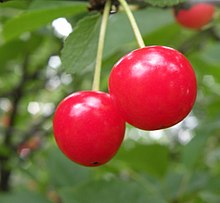
Thursday, October 6, 2016
Drinking tart Montmorency cherry juice can reduce early signs of hypertension

Saturday, February 6, 2010
7,8-Dihydroxyflavone (a selective TrkB agonist) as new class of brain protecting drugs ?
Friday, October 19, 2012
Tuesday, January 19, 2010
Quercetin blocks Hepatitis C infection....
As per the claim by the lead researcher Samuel French Assistant Professor, Pathology of UCLA, they have identified major two cellular proteins (HSPs, heat shock proteins 40 and 70) that play an important role in hepatitis C infection, and they say the finding may point to new and less toxic treatments for the disease, which can lead to cirrhosis and liver cancer. The researchers also found that Quercetin, blocks the synthesis of two heat shock proteins 40 and 70proteins and significantly inhibited viral infection in tissue culture.
Quercetin (see the structure) :
Is a plant-derived flavonoid, specifically a flavonol, used as a nutritional supplement. Laboratory studies show it may have anti-inflammatory and antioxidant properties, and it is being investigated for a wide range of potential health benefits.Interestingly American cancer society, says that while quercetin has been promoted as being effective against a wide variety of diseases, including cancer, There is current early-stage clinical research on quercetin addressing safety and efficacy against sarcoidosis, asthma and glucose absorption in obesity and diabetes. Food riches in Quercetin includes, capers, lovage, apples, tea (Camellia sinensis), onion, especially red onion (higher concentrations of quercetin occur in the outermost rings), red grapes, citrus fruit, tomato, broccoli and other leafy green vegetables, cherries and berries.
virus production with low associated toxicity.
Hope the researcher will have positive results from the phase 1 clinical trial.....
Ref :http://www.cancer.ucla.edu/Index.aspx?page=644&recordid=312
Saturday, August 21, 2010
Endothelial Function Improvement With Dietary (Cocoa) Flavanols in Patients With Coronary Artery Disease....
A new study by UCSF cardiologists and researchers lead by Dr. Yerem Yeghiazarians found that high concentrations of cocoa flavanols decrease blood pressure, improve the health of blood vessels and increase the number of circulating blood-vessel-forming cells in patients with heart disease. The findings indicate that foods rich in flavanols such as cocoa products, tea, wine, and various fruits and vegetables have a cardio-protective benefit for heart disease patients.
Flavanols are phytonutrient compounds that are found naturally in apples, grapes, tea, cocoa and cherries, which account for the antioxidant effect provided by red wine and green tea. The study found a protective effect from a cocoa drink with 375 mg of flavanols, but according to researchers, a standard or recommended dosage has not yet been defined to achieve optimal health benefit.
The UCSF team has shown for the first time that one of the possible mechanisms of flavanol's benefit is an increase in the circulation of so-called angiogenic cells in the blood. These cells, also known as early endothelial progenitor cells, are critical for the repair process after vascular injury, and perform function and maintenance roles in the endothelium. Endothelium is the thin layer of cells that line the interior wall of blood vessels.
In the current study, the benefit seen from the two-fold increase in circulating angiogenic cells was similar to that achieved by therapy with statins and with lifestyle changes such as exercise and smoking cessation. The benefit demonstrated with cocoa flavanol therapy occurred in addition to the medical regimen already being taken by study participants.
"Our data support the concept that dietary flavanols at the levels provided -- in tandem with current medical therapy -- are safe, improve cardiovascular function, and increase circulating angiogenic cells, which have previously been shown to correlate positively with long-term cardiovascular outcomes" said Yeghiazarians.
Though long-term trials examining the effects of high-flavanol diets on cardiovascular health and function are warranted, but these early findings help us understand how these compounds impact the function of damaged blood vessels...
Ref : Yerem Yeghiazarians et.al., J. Am. Coll. Cardiol., July 13, 2010; 56: A20.


